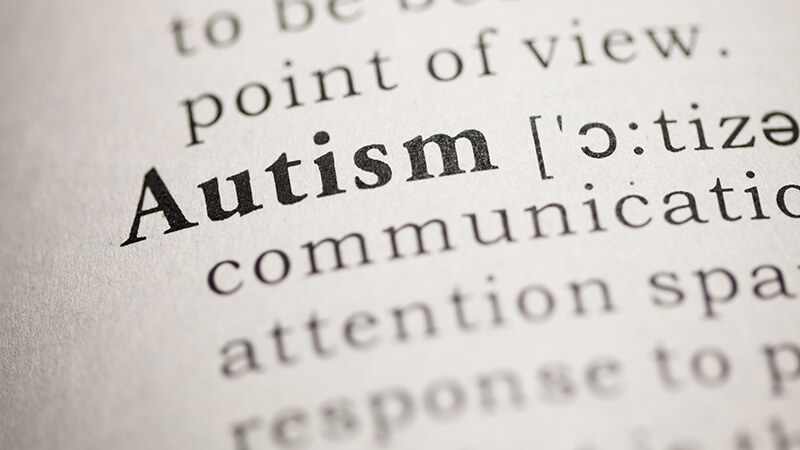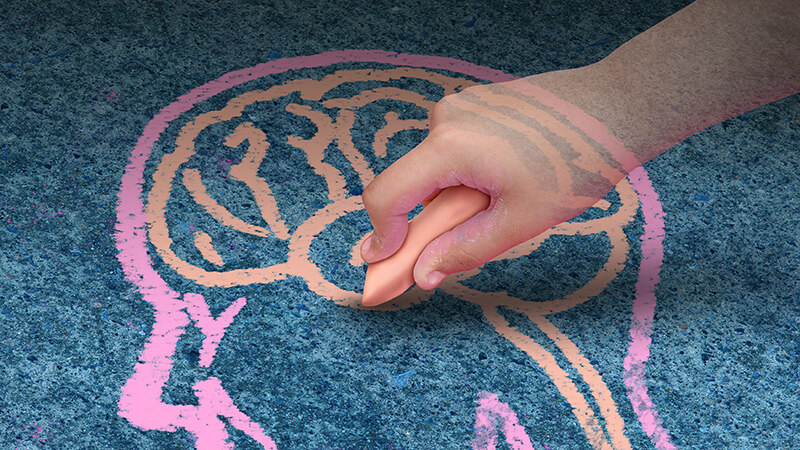Is it possible for autism to go unnoticed into teenage years or adulthood? Recent data from the CDC shows that one in 44 kids get diagnosed with autism. This makes us think deeply about when autism starts to show and why early spotting is key. The idea of finding autism in teens or adults brings up many questions. It’s about early spotting and how early help changes things. For those found to have autism later, their path to understanding their own minds is full of challenges and myths.
Getting diagnosed with autism varies for everyone. For some, the signs might not be clear until they’re much older. Although early signs can be there, things like hiding traits, especially in girls, or other disorders can make it hard to diagnose. It’s vital to know that while autism is usually found early, and doctors suggest checking all kids at 18 and 24 months, autism is with someone from birth, not appearing suddenly. Research shows that a full look at someone’s history and actions is key for a trusted diagnosis, even in adults.
Key Takeaways
- Autism is a neurodevelopmental condition identified traditionally in early childhood, but it can go undiagnosed into adolescence and adulthood.
- Diagnosing autism in adolescence or adulthood often reveals a history of subtle symptoms and developed coping strategies that may mask the disorder.
- Early intervention is critical as it can significantly improve outcomes for individuals with autism.
- Girls with autism are more likely than boys to mask their symptoms, which can lead to delayed or missed diagnoses.
- Reliable diagnoses can be made as early as 2 years old by experienced professionals, but signs may be evident within the first 12 to 24 months.
- Co-occurring disorders may present behaviors similar to autism, which necessitates thorough evaluation to rule out or diagnose concurrent conditions.
- Regular developmental and behavioral screenings are recommended during well-child visits to monitor potential early signs of autism.
Understanding Autism Spectrum Disorder Across Ages
Autism Spectrum Disorder (ASD) is a condition that affects people differently as they grow. It’s important to know when autism can start. We must also separate myths from facts about autism in adults. This helps us understand the disorder better and get help when needed.
The Misconception of Late Onset Autism
Many people think autism starts later in life. This isn’t true. Autism is something one is born with. Symptoms have to be seen early in childhood for a diagnosis. Sometimes, autism is not noticed until later because the person might not have many social challenges early on. This delay can make it seem like the autism developed later than it did.
Signs and Symptoms in Adolescence vs. Early Childhood
Symptoms of autism show up differently as one grows. In young kids, delay in talking, less eye contact, and not much social interaction can signal autism. Doctors look for these signs during check-ups at certain ages.
For teenagers, autism can mean hard times with friendships, not getting social hints, or dealing with school’s social life. While autism doesn’t change, older kids face more complex social situations. This can make symptoms more noticeable. Sometimes, what seems like late onset autism is just an overlooked diagnosis from childhood.
- Getting help early is key and can really improve a child’s growth.
- The CDC keeps studying autism in kids to better understand it.
It’s also vital to recognize autism in adults. Some adults don’t know they have autism until later in life. This is tough because their symptoms might look like other mental health issues. For adults, ASD could mean challenges at work or with friends.
It’s important to clear up myths about when autism can start and acknowledge it lasts a lifetime. Knowing how autism changes through life helps us support people better. With the right help and understanding, people with autism can enjoy a good life and be part of society.
How Late Can Autism Develop: Myths vs. Facts
Understanding autism’s timeline is vital for clearing up common myths. Autism starts early in life but sometimes isn’t spotted until later. This is why some think autism can emerge late. Let’s explore the myths and facts to understand how autism is found in older kids.

Autism isn’t something that starts in teens or adults. It’s there from childhood but might not be noticed right away. This is true for milder cases or when a person has high-functioning autism. The signs in older kids often show when they can’t handle social situations well.
- Myth: Autism can develop in adolescence or adulthood.
- Fact: Autism is a lifelong developmental disability that is present from early childhood, regardless of when it is diagnosed.
The CDC says autism affects 1 in 44 American kids, highlighting its commonality. Yet, autism in older children may look like just bad behavior or get mixed up with other issues like anxiety. This can lead to a late diagnosis, but it’s not the same as autism starting late.
- It’s crucial to know that early signs can be missed. These include not interacting much, odd speech, and repeated actions.
- Be aware that high-functioning individuals might hide their autism traits well. They do this until life’s social challenges grow too big.
It’s key to know the difference between autism and other conditions that look similar. Getting the right support depends on this. Notice signs of autism in older kids needs careful observation and expert help. Understanding this can greatly help improve their lives.
So, autism doesn’t start late in life, but finding out about it can happen when someone is older. Being aware and pushing for early help is crucial. This can make life better for those with ASD.
The Challenges of Diagnosing Autism Later in Life
Diagnosing autism in teens or adults brings unique challenges. Healthcare professionals, families, and the individuals themselves struggle with this. It’s key to understand these hurdles to better diagnose and support those affected.

Gender Disparities in Autism Identification
Autism shows up differently in males and females, causing diagnosis rates to vary. Boys get diagnosed with Autism Spectrum Disorder (ASD) about four times more than girls. This might be because autism symptoms are less obvious in females. They often hide their struggles to fit in socially. As a result, girls might get wrongly diagnosed with ADHD or anxiety instead of autism.
Subtle Symptoms That Complicate Late Diagnosis
Diagnosing autism late is tough because adults have learned to cope. They might copy social behaviors or hide their symptoms. This makes it hard for experts to spot ASD without detailed checks. Also, things like family genes and where you grow up play a big role in autism. This mix of hidden symptoms and different backgrounds makes diagnosis complex.
To tackle these challenges, it’s important to recognize how autism looks in adults and young people. We also need to make healthcare workers more aware and well-trained. This is crucial for giving people the right help. It leads to a better life and helps them be part of the community.
Conclusion
Understanding autism spectrum disorder (ASD) is vital as it shows how differently it affects people, particularly when found late in life. Autism is not just a childhood issue; it’s a lifelong condition. If it’s not caught early, it can greatly change a person’s life at every stage.
Many who find out they have ASD later on feel the impact of late diagnoses on older children. This delay limits their access to important, useful help. They might miss out on education that fits their needs and lack proper support. This can affect how they grow personally, in school, and with friends.
- The understanding how late autism can develop helps create better support for people as they get older.
- Identifying signs in adults is key. This is because the signs can look different than in kids. The ways to help adults are also different from those used for children.
Getting diagnosed late often means more use of certain medicines and alternative treatments. This happens as individuals and their families look for ways to deal with symptoms that were not recognized or misunderstood for years. The delay in diagnosis—sometimes over two years—means less use of helpful behavior therapies or school support that could have been beneficial if started sooner.
Also, knowing the gender differences and subtle signs that make diagnosing autism in adults tricky can help. This knowledge can help doctors and families better support those affected. By improving our understanding, we can build a more welcoming and helpful environment for everyone with ASD, no matter when they are diagnosed.
This look into the long path to a diagnosis shows why we need more awareness, better diagnosis methods, and help that reaches older children and adults with autism. By doing this, we’re not just helping them manage; we’re helping them thrive. This way, everyone with autism can have a chance at a full life.
How New Directions for Young Adults Can Help You
If you or someone you know is dealing with an autism diagnosis in adulthood, know that you’re not facing this alone. New Directions for Young Adults was started on June 28, 2006. It offers help to adults who found out they have autism later in life. The program aims to give specialized support for late diagnosed autism. It has helped many people accept their autism and work towards living independently.
New Directions is based around the Direction Therapy CMT. This approach is designed for young adults with high-functioning autism. Most clients stay with the program for about 2 1/2 years. This shows how committed New Directions is to helping each person. The program offers a caring environment. It focuses on helping people regain independence through therapy, educational help, job placement, and social activities.
People who join New Directions get more than just occasional services. The program is tailored to meet their unique needs. It helps them set and achieve goals in their work and personal lives. Studies show that participants improve in adapting, communicating, and making their own decisions. For young adults on the spectrum, finding the right support can change their lives. New Directions for Young Adults offers this support. It helps them live on their own, make friends, and feel confident in life.



